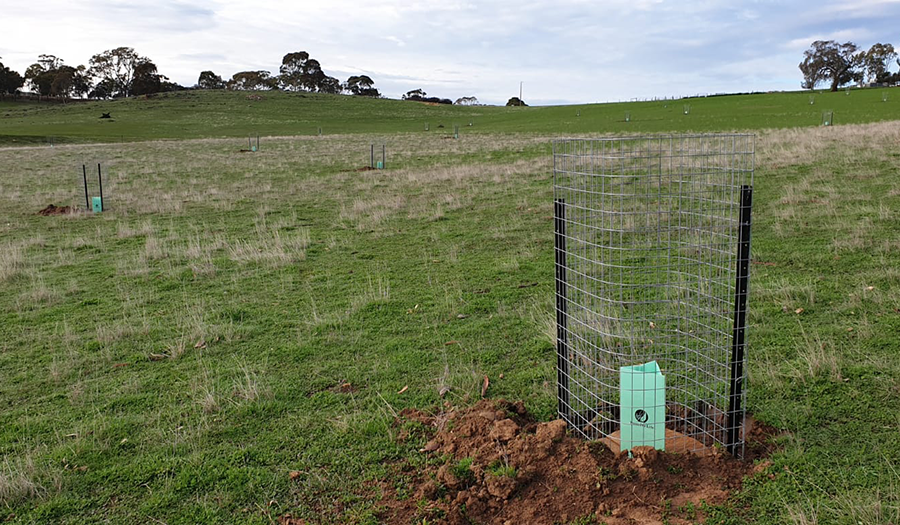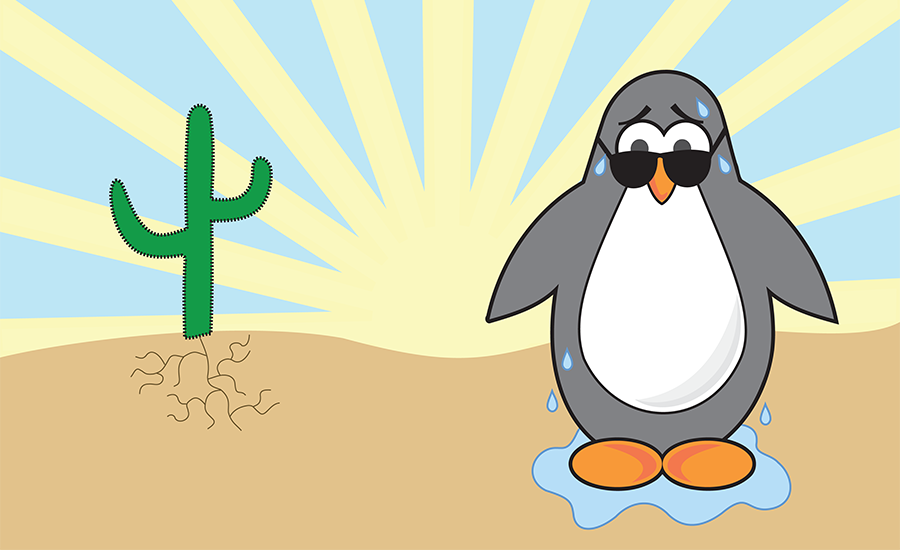Planning your Revegetation Project: Part 2

In part 1, we covered the planning of plant selection, weed control and the planting or seeding process. In the second part of this post, we focus on three more planning stages to consider when developing your revegetation project plan, namely fertilisation, tree protection and site maintenance.
Fertilisation
Australian native plants typically adapt to low nutrient soils. Some species — such as many of the Acacia, Banksia, Hakea and Pultenaea species — are susceptible to excess phosphorous. Considering that revegetation reconstruction often happens in sites where fertilisers have been heavily applied during agricultural processes, fertilisation of native reconstructive projects isn't always required.
In fact, fertilisation can sometimes be a detrimental inclusion. In some cases, excess nutrients may need removing. For example, you may need to scalp nutrient-rich topsoil from heavily fertilised ex-farming sites to create suitable soil for native grass seeding.
The best approach is to factor in a soil nutrition assessment into your project timeline. Do this early enough, up to a year before your anticipated planting time, to cater for any required soil amendments. Your assessment may include:
- Reviewing the site's history
- Examining the condition of any existing vegetation
- Obtaining a professional soil analysis
Soil amendments can be added to the soil with cultivation, included as an individual process at the time of planting, or applied to the plants after seeding or planting.
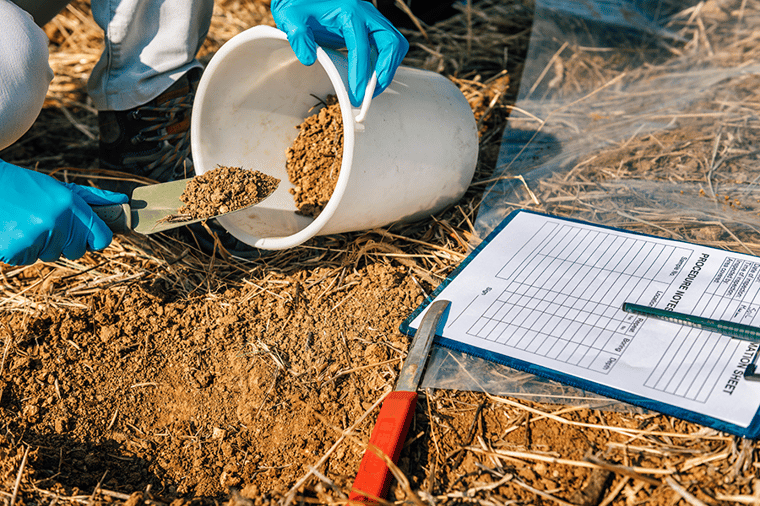
Image: Taking a soil sample for nutritional analysis. Common macronutrients analysed include compounds of nitrogen, phosphorus, potassium, calcium, magnesium, and sulfur.
Tree Protection
Bush Tucker is a popular thing, and our native animals and livestock are in on the trend! Whether native to Australia, introduced as stock or invasive pests, all sorts of animals will enjoy grazing on your young, tender seedlings. Therefore, protection for your new seedlings is critical. The type of protection you need depends on the kind of grazing that is likely to occur.
At least one year before planting, begin to monitor the site for potential threats. Then, use the information you gather to create a pre-planting pest control program and incorporate this into your revegetation plan. When you know which invasive pests are a threat, you can determine the type of physical protection you'll need for any animals still present after control.
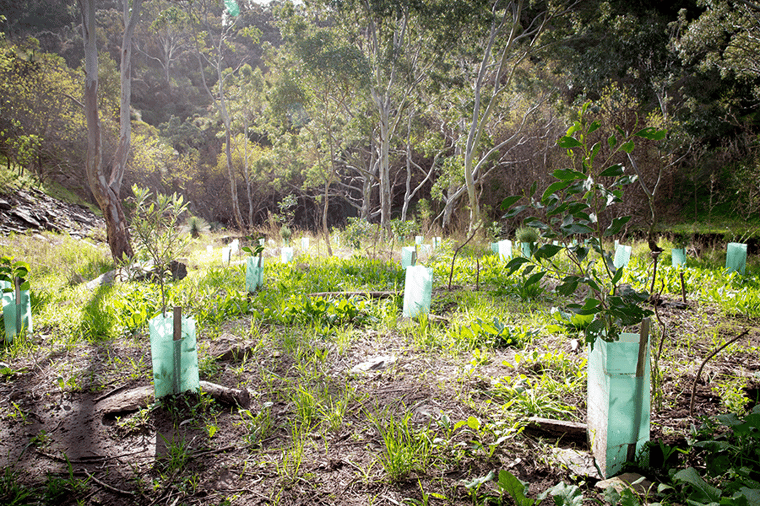 Image: Plastic fluted tree guards protect seedlings in a revegetation site.
Image: Plastic fluted tree guards protect seedlings in a revegetation site.
Site Maintenance
Like with any 'garden', a reconstructive revegetation project requires ongoing maintenance. Factor in two to three years for continuing care into your project timeline. Things such as regular watering, weed control and pest management need consideration to ensure the project has the best chance of meeting its objectives.
Who can help me plan my project?
Australia consists of multiple natural resource management regions. Each region has organisations staffed with people familiar with the revegetation process, who can help with species selection, weed control advice and even funding applications. They can also inform you of local planning regulations if any apply to your project. The link below provides an interactive map to help you discover which board can support you.
Find my NRM regional organisation [interactive map]
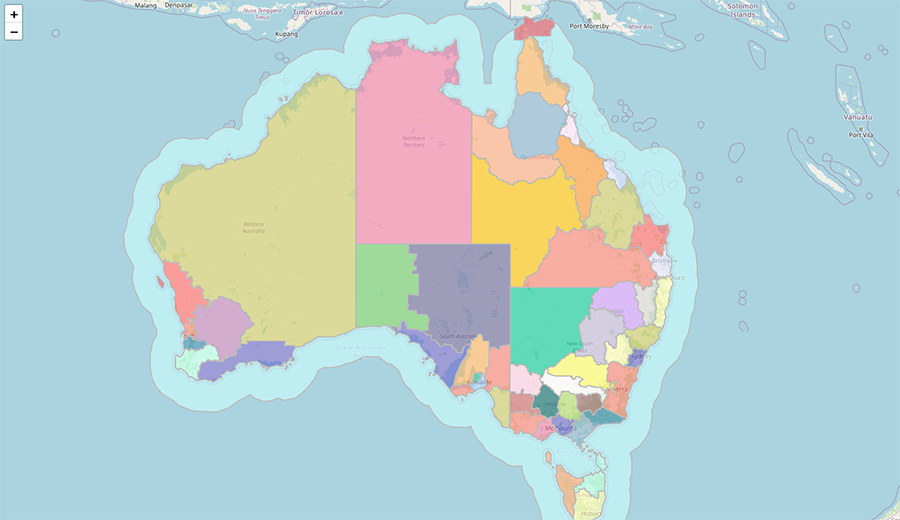 Image: NRM Regions is a collective of 54 NRM organisations from all over Australia.
Image: NRM Regions is a collective of 54 NRM organisations from all over Australia.
Next Steps
In our next blog post, we'll do a deeper dive into plant selection and consider what species belong in which areas and how to get in touch with people who grow certain species.
If you have any questions relating to the planning stage of your revegetation project, feel free to reach out to our team. Please email us at info@arborgreen.com.au.
If you've recently completed a noteworthy tree planting or bush revegetation project and you would like to feature your planting project, follow this link to fill in your project details.
Access the full Revegetation blog series.
/Arborgreen%20-%20DGreen%20-%20RGB%20-%20Sml.png?width=1045&height=347&name=Arborgreen%20-%20DGreen%20-%20RGB%20-%20Sml.png)
